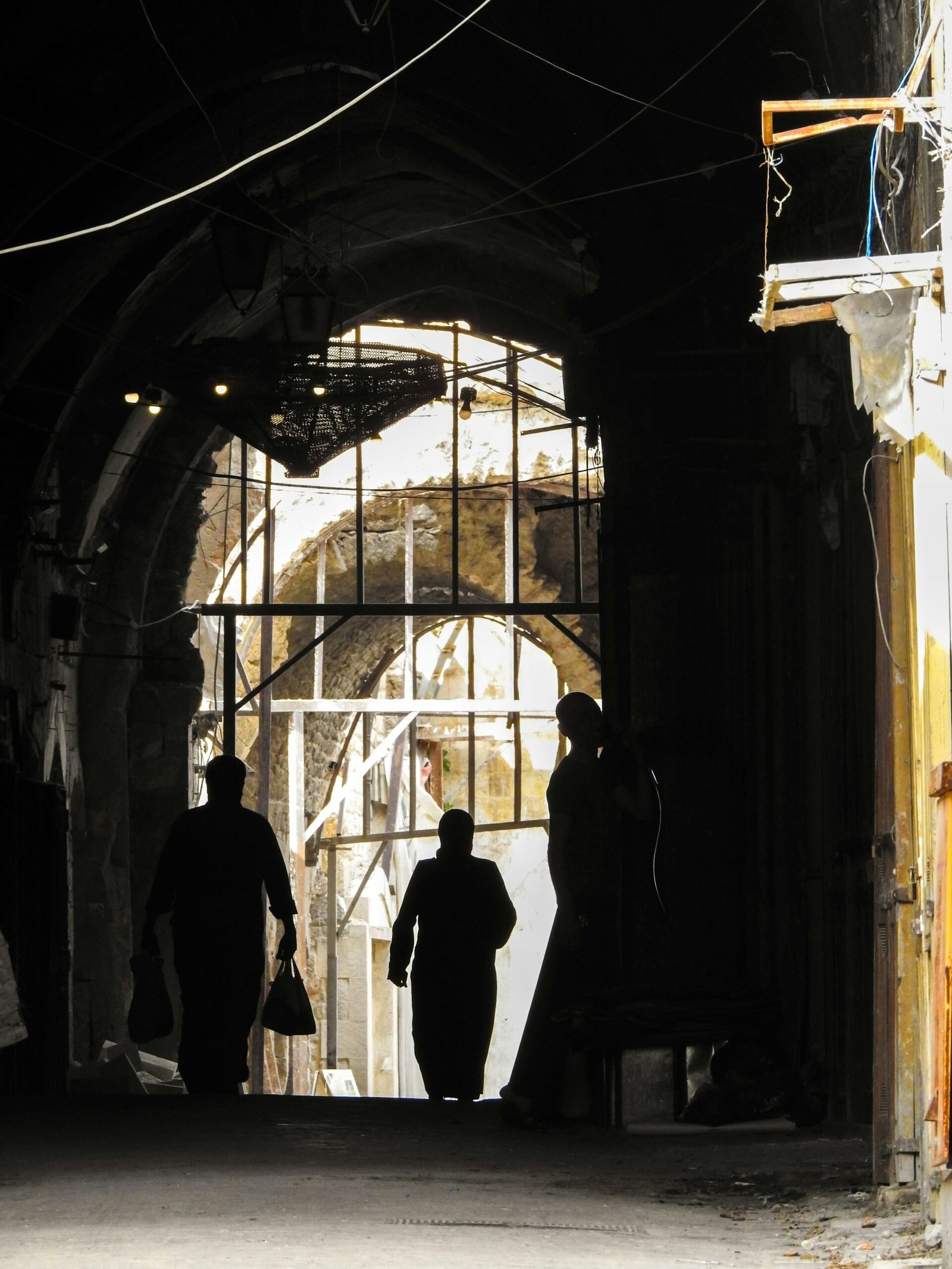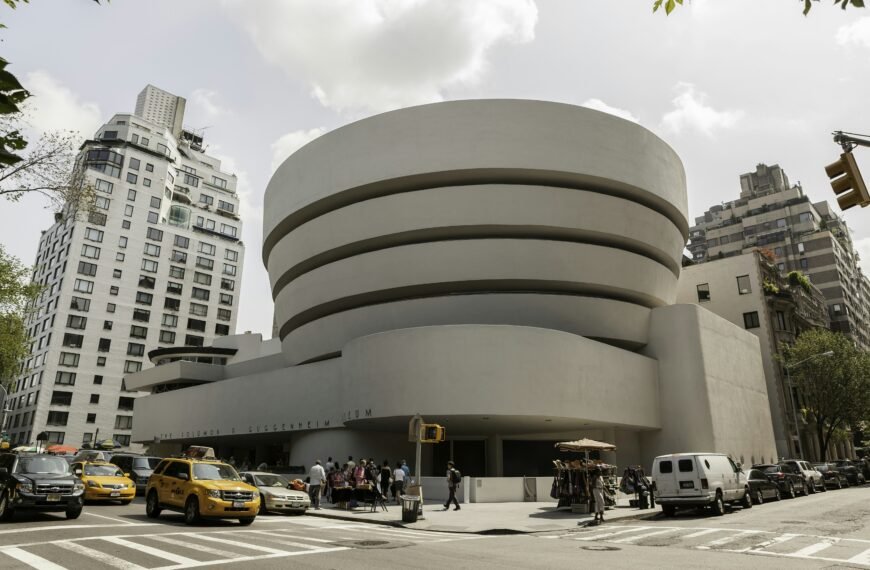Imagine a world where the Pyramid of Menkaure in Giza emerges from the desert sands, resplendent in its original glory. This ambitious vision is at the heart of “The Restoration Project”, an endeavor to resurface the pyramid with the same granite blocks that once adorned its exterior. With archaeological debates and preservation concerns muddying the waters, this extraordinary project brings together Egyptian and Japanese experts in a year-long study to determine its feasibility. Will this be a case of restoring ancient wonder or turning history into a tourist attraction? Only time will tell. As the debate rages on, the restoration of the Pyramid of Menkaure looms large, serving as a symbol of the ongoing tension between preserving the past and shaping the future. All eyes are on Giza, as this historic site becomes the epicenter of an ambitious architectural endeavor and the construction of the Grand Egyptian Museum.

Background
The Pyramid of Menkaure in Giza
The Pyramid of Menkaure is one of the iconic structures in the Giza plateau, located on the outskirts of Cairo, Egypt. It was constructed around 2532-2504 BCE as the tomb of King Menkaure, the eighth king of the Fourth Dynasty of Egypt. The pyramid stands at a height of approximately 65 meters (213 feet) and is made of limestone.
The original exterior cladding
Originally, the Pyramid of Menkaure was covered in multiple layers of finely polished Aswan granite, giving it a majestic and imposing appearance. The smooth, reflective surface of the granite cladding added to the grandeur of the pyramid and emphasized its significance as a royal burial site.
The current state of the pyramid
However, over the centuries, much of the granite cladding has either fallen off or been removed from the pyramid. As a result, the Pyramid of Menkaure stands today with its limestone core exposed, lacking the distinctive appearance it once had. This gradual deterioration has raised concerns about preserving the pyramid’s historical accuracy and aesthetic qualities.
The broader investment in Giza’s infrastructure
The restoration of the Pyramid of Menkaure is part of a larger investment in the Giza plateau’s infrastructure. This includes the construction of the Grand Egyptian Museum, which is set to be the largest archaeological museum in the world. These efforts aim to enhance the visitor experience and promote tourism by creating a more accessible and attractive destination for both local and international tourists.
The Restoration Project
Overview of the project
The restoration project for the Pyramid of Menkaure aims to resurface the exposed limestone core with the original granite blocks that once adorned its exterior. The goal is to recreate the pyramid’s original appearance, restoring its historical accuracy and preserving its cultural significance. This ambitious project, often referred to as “the project of the century,” holds great potential for revitalizing the pyramid and the surrounding area.
Initiators and key players
The restoration project is a collaborative effort between Egyptian and Japanese experts. Drawing upon their respective expertise, archaeologists, preservationists, engineers, architects, and other professionals are working together to realize this ambitious endeavor. The partnership between the two nations highlights the significance of international cooperation in tackling complex restoration projects.
Study period before restoration
Before embarking on the restoration work, an extensive study period of one year is planned. This period will involve in-depth research, surveys, and analysis of the pyramid’s structural condition and the feasibility of the restoration. It will provide vital information and insights necessary for making informed decisions and arriving at appropriate restoration strategies.
Debate and criticism
The proposal to resurface the Pyramid of Menkaure has sparked a vigorous debate and received criticism from various quarters. Opponents argue that the restoration would tamper with the pyramid’s unique character and turn the historic Giza plateau into a mere tourist attraction. Some preservationists and archaeologists contend that preserving the pyramid’s current state, even with its decay, is of utmost importance to maintain its authenticity.

Arguments for Resurfacing
Preserving the historical accuracy
One of the primary arguments in favor of resurfacing the Pyramid of Menkaure is to restore its historical accuracy. By covering the exposed limestone core with the original granite cladding, the pyramid’s appearance will more closely resemble how it looked in ancient times. This endeavor would provide visitors with a better understanding of its original grandeur and King Menkaure’s legacy.
Recreating the original appearance
Recreating the original appearance of the Pyramid of Menkaure is a compelling reason for resurfacing. With the granite cladding restored, the pyramid will regain its distinctiveness and aesthetics, allowing visitors to appreciate the intricate craftsmanship of the ancient Egyptians. It will provide a visual link to the past and reinforce the significance of this remarkable architectural achievement.
Enhancing the tourist experience
The resurfacing of the pyramid has the potential to greatly enhance the tourist experience. Visitors’ awe and fascination for the world-renowned Giza plateau can be further intensified by experiencing the pyramid in its restored state. They can witness the pyramid’s transformation and immerse themselves in the rich history and culture it represents, thus creating a deeper connection to the site.
Boosting the local economy
Revitalizing the Pyramid of Menkaure through restoration can have a positive economic impact on the local community. A restored and visually striking pyramid is likely to attract a larger number of tourists, leading to increased revenue from tourism-related activities. This, in turn, can generate employment opportunities, stimulate local businesses, and contribute to the overall economic growth of the region.
Arguments against Resurfacing
Maintaining the authenticity of decay
Opponents of resurfacing argue that maintaining the authenticity of the pyramid’s decay is crucial for preserving its historical value. The current state of the pyramid, with its exposed limestone, bears witness to the passage of time and serves as a reminder of the ancient civilization that built it. Altering its appearance through restoration, in their view, would sacrifice this authenticity.
Preserving the unique character
The Pyramid of Menkaure, with its worn and weathered appearance, exudes a unique and mysterious aura. Some argue that this character should be preserved, as it is a testament to the pyramid’s enduring legacy. The signs of age and decay present on the limestone surface are seen as essential elements that contribute to its historical significance and evoke a sense of awe and wonder that cannot be replicated.
Avoiding potential damage
Resurfacing the pyramid with granite cladding carries the risk of potential damage to the pyramid’s delicate limestone core. Removing the existing decayed outer layer and attaching the heavy granite blocks could cause structural issues and compromise the stability of the pyramid. Critics contend that the restoration process itself may inadvertently harm the very structure it aims to preserve.
Preventing commercialization
Another concern raised by opponents is the potential for the restoration of the Pyramid of Menkaure to lead to excessive commercialization. They fear that an intensified focus on tourism and attracting visitors may compromise the sanctity and authenticity of the site. There is a worry that the area may become overcrowded and lose its reverence as a burial site and a symbol of ancient Egyptian culture.

Feasibility Assessment
Structural stability of the pyramid
Before embarking on the restoration project, a comprehensive assessment of the pyramid’s structural stability is fundamental. The weight and distribution of the original granite blocks must be carefully evaluated to ensure that the pyramid can support their additional load. Experts will employ state-of-the-art technologies and techniques to thoroughly analyze the pyramid’s condition and make informed decisions regarding the restoration process.
Availability of original granite blocks
An essential aspect of the feasibility assessment is determining the availability of original granite blocks for the restoration. Recovering granite from other ancient sites or quarries that match the composition, color, and texture of the original cladding can be a significant challenge. The sourcing and selection of suitable granite blocks will require extensive research and coordination with experts and stakeholders.
Technical challenges and solutions
Resurfacing the Pyramid of Menkaure presents various technical challenges that need to be addressed. Ensuring proper adhesion and stability of the granite cladding, mitigating the risk of moisture damage, and establishing a comprehensive maintenance plan are among the key considerations. Innovative engineering and architectural solutions will be required to overcome these challenges and ensure the long-term preservation of the restored pyramid.
Cost estimation for the restoration
Determining the financial feasibility of the restoration project is also of utmost importance. The cost estimation involves comprehensive research, analysis, and budget planning. It includes expenses related to materials, labor, technology, equipment, and ongoing maintenance. A thorough understanding of the financial implications will assist in making informed decisions and securing the necessary funding for the restoration.
Conservation vs Restoration
Different philosophies in conservation
The debate surrounding the restoration of the Pyramid of Menkaure highlights the differing philosophies in the field of conservation. Some argue for restoration, aiming to bring back a structure or artifact to its original state, while others advocate for the preservation of its current condition, emphasizing the significance of decay and historic context. Balancing these two approaches is a delicate endeavor with various implications for cultural heritage.
Implications for the Pyramid of Menkaure
The decision to resurface the Pyramid of Menkaure would signify a restoration approach, acknowledging the value of recreating its original appearance. This choice would prioritize authenticity and historical accuracy. However, it would also raise questions about the impact on the pyramid’s unique character and the potential loss of the embodied history associated with its current state.
Balancing preservation and restoration
Finding the right balance between preservation and restoration is a complex task. It requires striking a delicate equilibrium between maintaining the historical significance and authenticity of a site while ensuring its longevity and accessibility to future generations. The restoration of the Pyramid of Menkaure must navigate this fine line and address the concerns raised by both proponents and critics.
Lessons from past restoration projects
The restoration of historical structures has always been a subject of considerable debate and scrutiny. Past restoration projects, such as the restoration of the Parthenon in Athens and the Great Wall of China, offer valuable lessons and insights. They emphasize the importance of thorough research, collaboration between experts, and engaging stakeholders to ensure the most informed and responsible decision-making process.
Environmental Impact
Effects on the ecosystem
Any restoration project of this magnitude must consider its potential impact on the surrounding ecosystem. excavations, construction activities, and increased foot traffic have the potential to disturb local flora and fauna. It is crucial to implement measures to minimize disruption and protect the vulnerable ecosystem surrounding the Pyramid of Menkaure during and after the restoration process.
Impact on surrounding archaeological sites
The restoration of the Pyramid of Menkaure would not occur in isolation but within the context of the Giza plateau, home to other significant archaeological sites. Multiple structures coexist in this World Heritage Site, and the restoration project must carefully consider their relationships and impacts. Collaboration among experts and organizations is essential to ensure the preservation and integrity of the entire area.
Mitigation measures for environmental concerns
To mitigate potential environmental concerns, comprehensive mitigation measures must be implemented during the restoration. These can include the controlled management of construction activities, responsible waste disposal, and strict adherence to environmental regulations and protocols. By integrating sustainable practices and minimizing the project’s ecological footprint, adverse impacts on the environment can be mitigated.
Sustainability in restoration practices
Sustainability should be at the forefront of any restoration project. This involves considering the long-term effects and implications of the restoration on the environment, local communities, and cultural heritage at large. Incorporating sustainable building practices, renewable energy sources, and eco-friendly materials can help reduce the carbon footprint and contribute to a more sustainable future for cultural restoration projects.
Collaboration and Experts
Egyptian and Japanese partnership
The restoration project of the Pyramid of Menkaure is a remarkable collaboration between Egyptian and Japanese experts, exemplifying the importance of international cooperation in preserving cultural heritage. The involvement of various stakeholders, including archaeologists, preservationists, engineers, architects, and craftsmen from both countries, ensures a comprehensive and holistic approach to the restoration.
Role of archaeologists and preservationists
Archaeologists and preservationists play a crucial role in the restoration project. They bring their expertise in historical research, material analysis, and archaeological excavation to inform decision-making processes. Their knowledge ensures that restoration efforts respect the pyramid’s significance, cultural context, and historical accuracy, striking an appropriate balance between preservation and restoration.
Contribution of engineers and architects
Engineers and architects bring technical expertise to the restoration project, ensuring the structural stability and integrity of the pyramid. They play a vital role in the feasibility assessment, employing advanced technologies to assess the pyramid’s condition and develop innovative solutions for restoration. Their collaboration with archaeologists and preservationists ensures a harmonious integration of historical accuracy and technical feasibility.
Consultation with international organizations
The restoration of a significant cultural heritage site such as the Pyramid of Menkaure requires consultation with international organizations specialized in heritage preservation. Institutions such as UNESCO and ICOMOS can offer guidance, share best practices, and contribute to the decision-making and implementation processes. Engaging with these organizations ensures that the restoration project aligns with international standards and ethical principles.
Public Perception and Debate
Local community opinions
The restoration of the Pyramid of Menkaure has sparked intense public debate and engaged the local community in discussions about their heritage. The opinions within the community are diverse, ranging from those who advocate for restoring the pyramid’s former glory to those who believe in preserving its current state as a testament to the passage of time. Public engagement and dialogue are essential for fostering a sense of ownership and shared responsibility for cultural heritage.
Stakeholder involvement and engagement
Engaging with stakeholders is crucial in a restoration project, ensuring their concerns, perspectives, and expertise are taken into account. This includes the involvement of local communities, heritage professionals, government agencies, and tourism authorities. Successful stakeholder engagement fosters a sense of inclusivity, transparency, and collective decision-making, leading to a more holistic and sustainable restoration process.
Media coverage and public reaction
The restoration project of the Pyramid of Menkaure has garnered significant media attention, amplifying the public debate. Mainstream media outlets, educational platforms, and social media have become platforms for discussing the merits, challenges, and potential impacts of the restoration. Public reaction to the project is diverse, reflecting a wide range of opinions and perspectives on cultural preservation, tourism, and heritage management.
Impact on the tourism industry
The restoration of the Pyramid of Menkaure has the potential to significantly impact the tourism industry in the Giza region. A well-executed restoration project can attract a larger number of tourists, increase visitor satisfaction, and generate economic benefits for the local community. However, striking a balance between tourism development and heritage preservation is crucial to prevent overtourism and ensure the long-term sustainability of the industry.
Decision and Future Steps
Factors influencing the decision
The decision to proceed with the restoration of the Pyramid of Menkaure will be influenced by a variety of factors. These include the findings and recommendations from the year-long study period, feasibility assessments, consultations with experts and stakeholders, and public opinion. A comprehensive and well-informed decision-making process considers the cultural, historical, environmental, and socio-economic aspects of the restoration project.
Potential alternatives or compromises
In the face of ongoing debate and differing opinions, exploring potential alternatives or compromises is important. Alternative approaches could include partial resurfacing, using lighter materials, or focused restoration of specific parts of the pyramid. These alternatives aim to strike a balance between historical accuracy, preservation, and conservation concerns, addressing the diverse perspectives on the restoration project.
Long-term maintenance and monitoring
Regardless of the decision made regarding the restoration, long-term maintenance and monitoring will be essential. A well-defined maintenance plan and regular monitoring will ensure the continued preservation and integrity of the restored pyramid. This requires establishing partnerships, allocating resources, and engaging stakeholders in ongoing care and conservation efforts to safeguard the monument for future generations.
Implications for future restoration projects
The restoration of the Pyramid of Menkaure holds broader implications for the field of heritage restoration and preservation. The lessons learned, best practices identified, and challenges encountered will inform future restoration projects around the world. The Pyramid of Menkaure serves as a beacon, demonstrating the importance of a careful balance between preservation and restoration, respecting the authenticity and value of cultural heritage sites.







